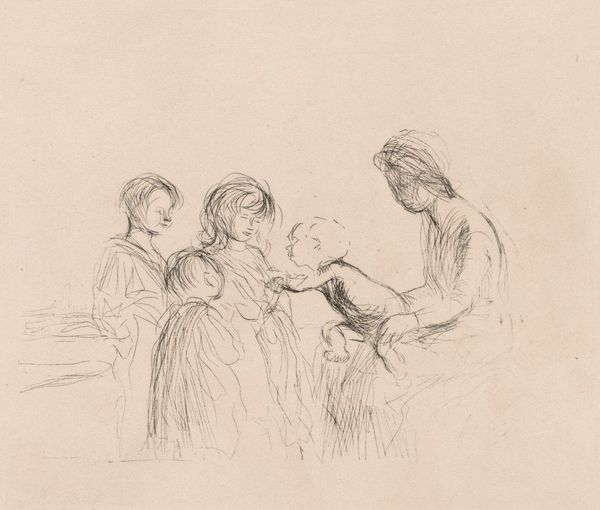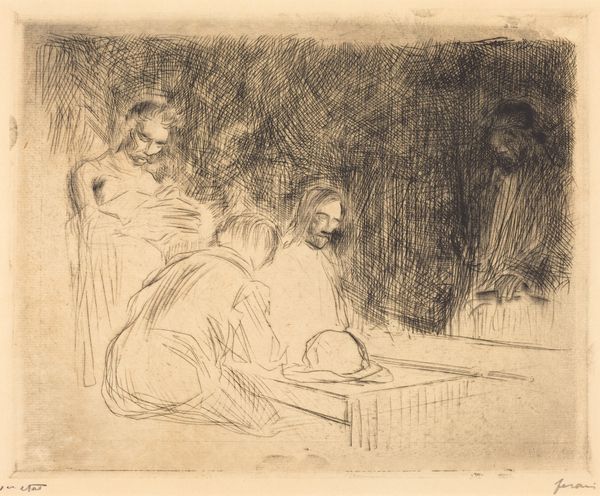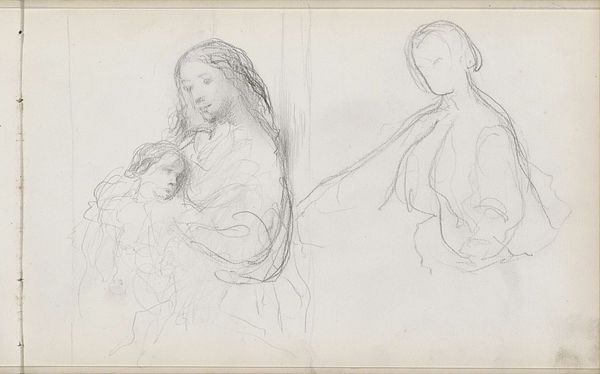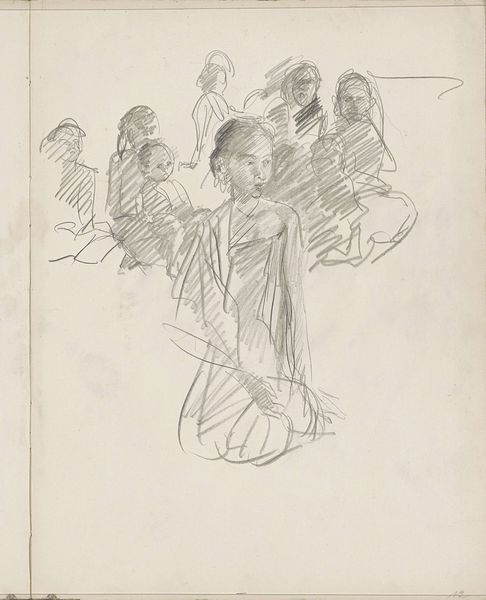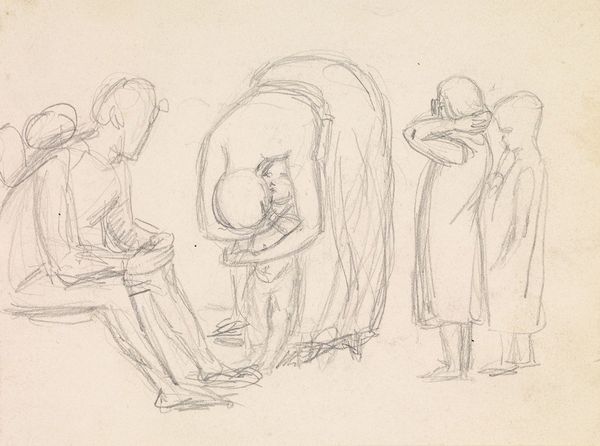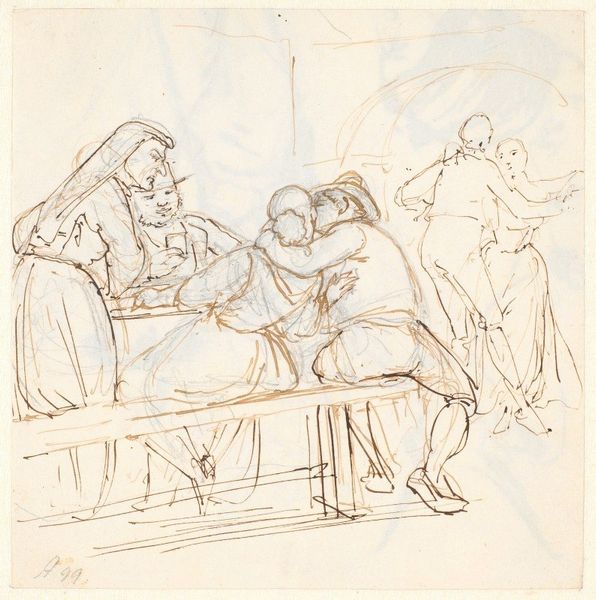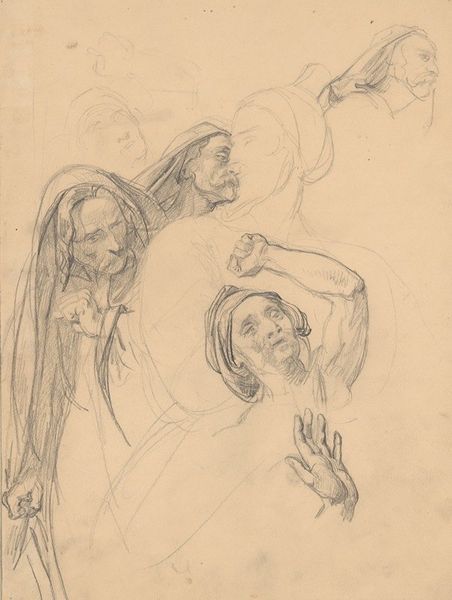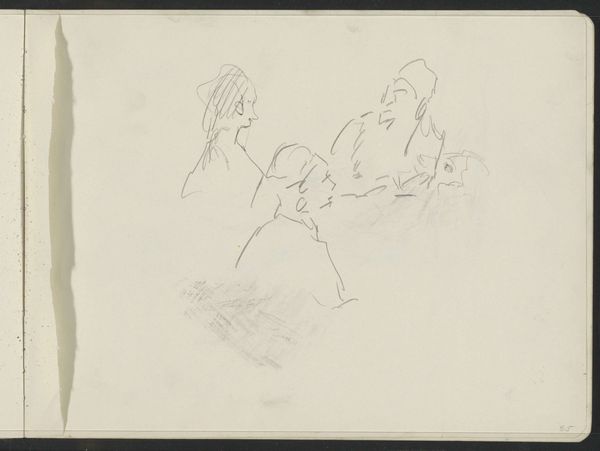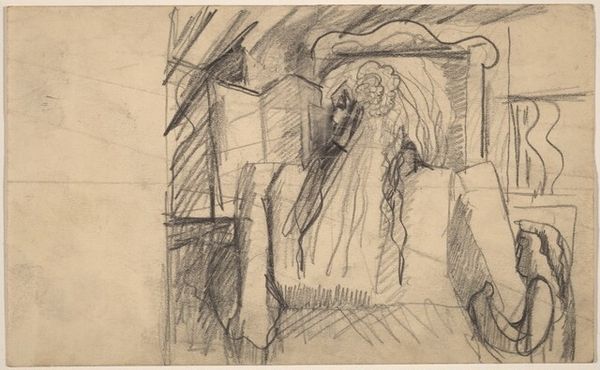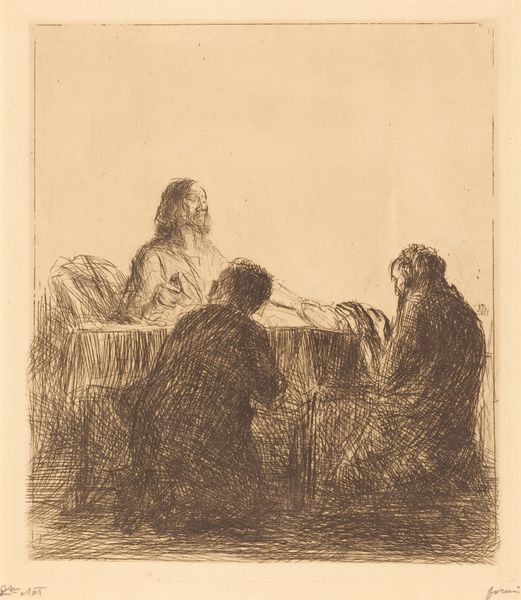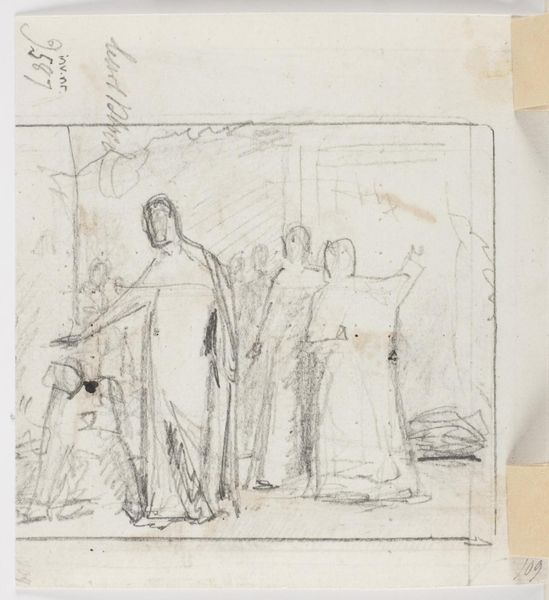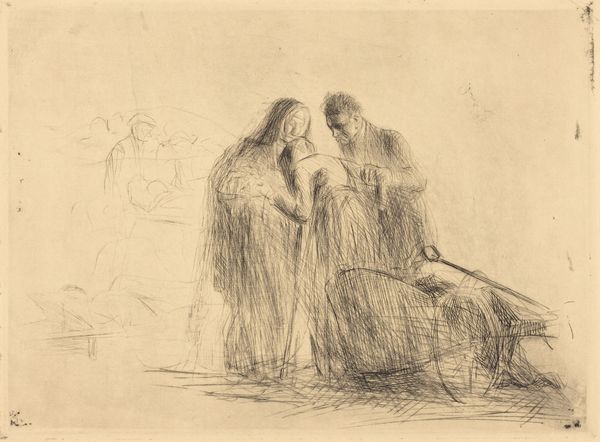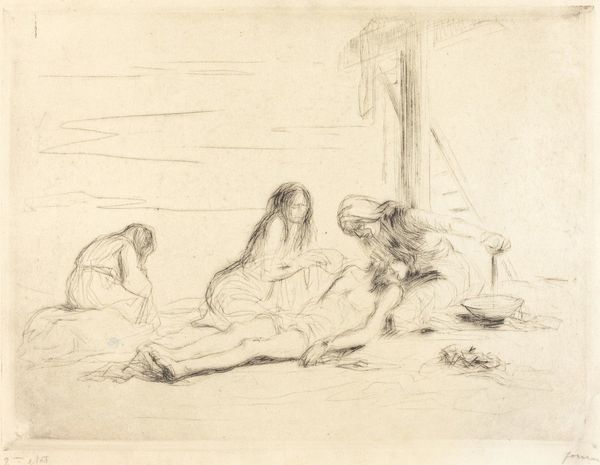
Copyright: Public Domain: Artvee
Editor: This is Jean-Louis Forain's "Christ at Emmaus," circa 1902, created with pencil. I’m immediately struck by the contrast between the solidity of the figures at the table and the almost spectral presence of Christ. What compositional elements stand out to you? Curator: Note the stark dichotomy: The clustered solidity of the figures dining, constructed from sharp, angular lines versus the ethereal depiction of Christ. See how he employs a very open, almost gestural drawing technique for Christ? The lack of clear definition destabilizes our reading of his form. The table acts as a rigid horizontal divider; on what is your eye drawn to? Editor: Definitely Christ. It's such a dramatic contrast in style. It looks almost unfinished compared to the figures in the background. Why do you think Forain made that choice? Curator: Consider this dichotomy as a means to differentiate between the earthly and the divine. The table scene is anchored, stable. But Christ appears in the scene with very faint lines. He lacks weight, seemingly present but just beyond our grasp. Observe the verticality of both sides--the figure of Christ and the lined figures beyond; the space becomes geometric yet imbalanced. What might this suggest? Editor: I see how the geometry and lack of definition around Christ create a sense of spiritual tension and uncertainty, which relates to the biblical narrative. He's present but unrecognized. So it's not a lack of skill, but a deliberate formal choice that emphasizes the conceptual meaning of the scene. Curator: Precisely. Form becomes meaning. Looking closer at these formal aspects unveils greater depth than any singular narrative reading can provide. Editor: I never thought about the interplay between defined and undefined forms in religious art. It provides another level of interpretation beyond the religious narrative, making the experience more complex and enriching. Thanks!
Comments
No comments
Be the first to comment and join the conversation on the ultimate creative platform.
